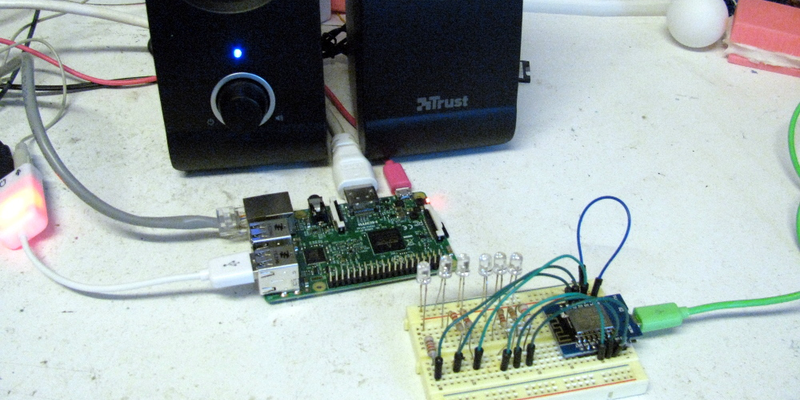[Luc Volders] is building his own smart house with the help of Google Home and an ESP-8266. Inspired by the house computers from the TV show, Eureka [Luc] created an IoT ecosystem using a mix of off the shelf devices and open source software.
There are about a thousand ways to create a DIY smart home these days. All of them involve setting up a command receiver (like Amazon’s Echo or Google Home), some sort of cloud connection, and an end device controller. This can get complex for the beginner. [Luc’s] article is great because he walks is through each step tutorial style. He even keeps things simple by programming the ESP8266 using BASIC with ESP-BASIC.
[Luc] uses If This Then That (IFTT) as his cloud service. IFTT is the glue between Google’s cloud service and the ESP8266 connected to his home WiFi network. Speaking of which, [Luc] shows how to set up port forwarding on the router so all accesses to port 8085 go to the ESP8266. Not exactly strong security – but it’s better than opening the entire home network.
You don’t need a real Google home device for this hack. You can build your own with a Raspberry Pi. Once that is set up you can do everything from turning on lights to watering your lawn.
















Wait….this has been done, literally hundreds of times. Using IFTTT isn’t something new, getting it to work natively would be newsworthy (IFTTT usually causes some lag, where native integration would eliminate the need to go to an external web server to turn on the lights). Even a simple search on this site shows tons of articles where an esp8266 is used to control a relay, which is essentially what this is. Am I missing something here?
You are missing the fact that just because it is not completely unique and new, it is still not worthy of a post. Feel free to move on when you come to something that is not of interest to you.
I came accross this article from google and this is exactly what I was looking for. Thank you for this post Hackaday.
Same!!
You’re missing an important point: You need an external web server whenever your’re out of range from your wifi ;)
Nice, but It’d be nice if it didn’t use Google Home.
Or the Raspberry Pi.
You actually do not need the Raspberry Pi. If you would have read the story it says that it will work on the original Google Home Assistant. I just used a Raspberry Pi because the Home Assistant is not available over here and the PI Google SDK version IS available. Luc
Someone needs to finish/re-do the Jasper project: https://jasperproject.github.io/
Or just get one of the speech to text engines more usable by mortals, a pi should do it for a selected small number of speakers who are willing to train the engine (better security anyway). IBM’s old ViaVoice would have been fine for this, I incorporated into medical dictation projects in the early 2000s and it ran faster than realtime on a crap dell laptop then.
Faster than real-time?
Yes. A decent desktop of the era could transcribe several recordings (this was PDA days) of doctor dictation at a time. So, faster than real time. Just…there was this latency between the doc speaking the info and the final transcription into an html-like insurance form clone we created.
Ah, yup. Makes sense. I didn’t think of feeding the engine recordings….
There is one more integrated jasper implementation, but apparently only in French (examples and screen captures may be enough)
http://domotiquefacile.fr/jarvis/
what the heck is in the picture on his table by the clock on the bottom-right of the video still? is that a pair of arses?
Uh, probably peaches. Yeah.
this is more interesting than the “hack”…
Its well done, yes, but like others have said its been done before. Now if it could be done off the grid – no net connection – then I’d bookmark that one!
Is it only me or am I the only one not wanting to give Google, or any other company, any more data than I really need to?
“Need to” depends on what you want. I need to have Google Home devices to be happy, so I need to give Google some data. No worries.
I think you’re confusing “need” with “want”.
For the most part, YOU are in control of your own happiness, and many people in this world need to learn to own their own thoughts/feelings and stop believing that everything “happens to them”.
Indeed, I am in control. That’s why I like to tell Google Home what to do.
Nice read but any home automation that relies on anything “in the cloud” is a failure. Get it out of the cloud, and install a real HA os like Open HAB on that pi and go from there. THEN you can add in the voice control via the cloud, but at least the lights will stay working when the internet goes down.
First, we all understand you don’t like the cloud. What you (and others) don’t seem to understand is other people are willing to deal with the limitations of a cloud architecture and are OK with accepting them.
Second, this is remote control, not automation. This project specifically deals with voice control – so if you don’t have your cloud connection you lose voice control. Your lights won’t stop working, you’ll just have to get up and flick a switch like you were a caveman. If you have a system that doesn’t have manual control in the event of a server failure (whether that server is local or in the cloud) you should not be controlling anything you can’t live without.
Third, it is fast approaching the time where a proper cloud based implementation will be more reliable than a local, non-redundant server based system.
Hi, is it possible on rpi zero?